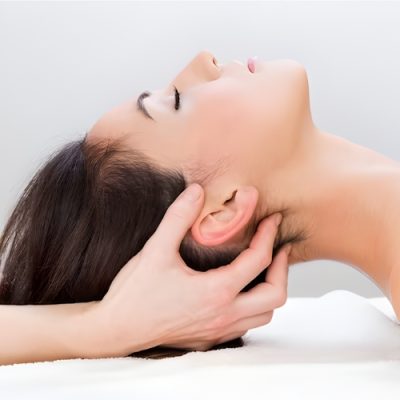Head massage involves applying gentle pressure and strokes to the scalp, neck, and shoulders to relax the mind and release tension.
A head massage feels fabulous. In addition to the sensory pleasure it offers, a head massage may ease symptoms of a headache, reduce stress, and possibly boost hair growth, too.
Many types of massage strokes are used during a head massage. Strokes are performed with flat fingers and hands and can vary from light to firm pressure. Using different types of strokes on the scalp, neck and shoulders are known to be an effective stress reliever and effective in providing relief from acute and chronic headaches.
Kneading is a common massage technique used during a head massage. Kneading is applied onto the neck and shoulders where there is muscle tissue. Kneading is a slow rhythmic massage technique that squeezes and pulls tissue. Kneading involves compressing soft tissues, improving deeper blood and lymph circulation. Stimulating the lymph circulation is important to remove waste products out of the tissues and maintain healthy muscles.
Circular frictions are applied using finger tips or thumbs. During a head massage circular frictions can be used on the scalp and neck. Pressure and depth of frictions can be adjusted dependent on the desired outcome. Circular frictions are repeated over the same area to help relieve tightness in the tissues and increase circulation.
Acupressure is used often in a head massage. Acupressure is a specific technique where fingertip or thumb pressure is applied on to pressure points or trigger points within the soft tissues. Pressure points help to dissolve knots, relax muscles and encourage blood circulation around the body. Pressure points are used around the shoulder, head and face to release common areas of tension. Acupressure is effectively used to decrease headaches.












